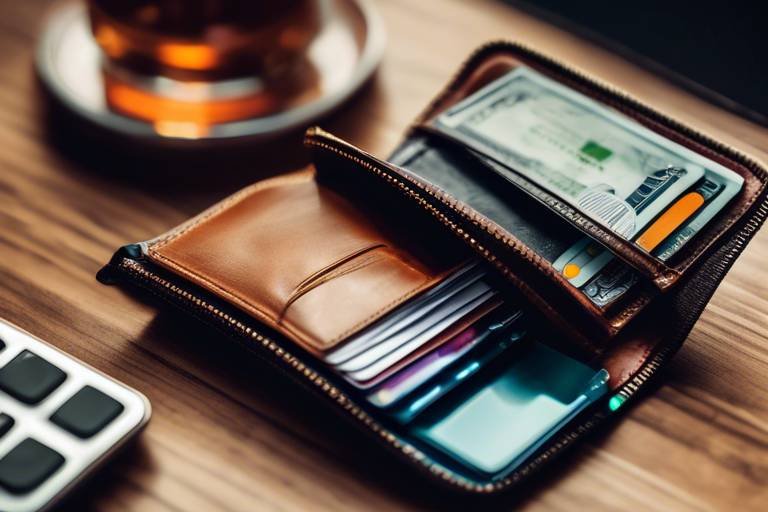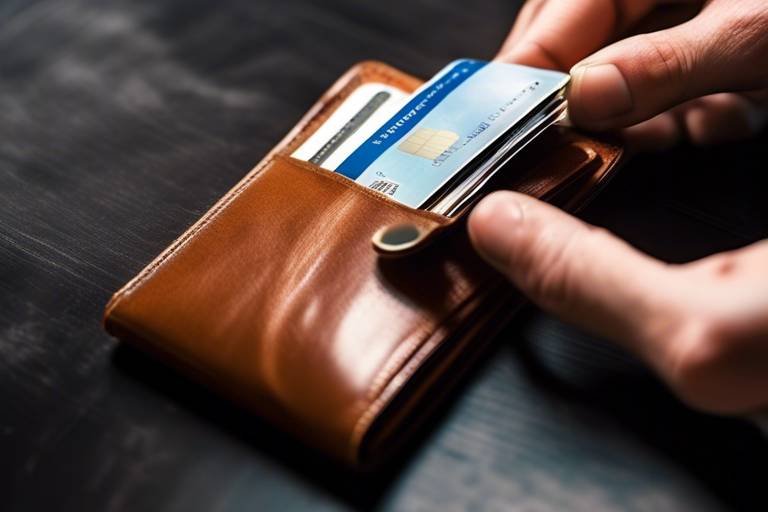Understanding Wallet Authentication Methods - What You Need to Know
In today's fast-paced digital world, securing your financial assets is more important than ever. With the rise of cryptocurrencies and digital wallets, understanding wallet authentication methods is crucial for anyone looking to protect their investments. Imagine your digital wallet as a treasure chest filled with valuable assets. Without the right locks and keys, that treasure could be vulnerable to thieves lurking in the shadows of the internet. This article will delve into various wallet authentication methods, highlighting their importance in safeguarding your digital assets and providing you with best practices to enhance your financial security.
As we explore these methods, you'll discover that not all authentication techniques are created equal. Some offer robust security features while others may leave you feeling a bit exposed. Think of it as choosing between a flimsy padlock and a high-tech biometric scanner for your treasure chest. The right choice can mean the difference between peace of mind and sleepless nights worrying about potential breaches. So, buckle up as we navigate through the intricate world of wallet authentication, ensuring you have the knowledge needed to make informed decisions for your financial safety.
When it comes to wallet authentication, there are several methods available, each designed to offer varying levels of security. Understanding these methods is essential for users to choose the right one that fits their needs. From traditional password protection to advanced biometric solutions, the landscape of wallet authentication is diverse. Here’s a quick overview of some common types:
- Password Protection: The most basic form of authentication, relying on something you know.
- Two-Factor Authentication (2FA): Adds a second layer of security, requiring a second verification method.
- Biometric Authentication: Uses unique biological traits, like fingerprints or facial recognition, for access.
- Hardware Wallets: Physical devices that store private keys offline, providing enhanced security.
By familiarizing yourself with these methods, you can better assess which combination offers the best protection for your digital assets. In the following sections, we will dive deeper into some of these authentication methods, exploring their benefits and limitations to help you make the best choice for your wallet security.
Two-factor authentication, commonly known as 2FA, is a security measure that requires not just a password and username but also something that only the user has on them. This extra layer of security is essential in today's digital landscape, where cyber threats are rampant. Imagine if a thief managed to get your password; with 2FA, they would still need that second piece of information to access your wallet, making it significantly harder for them to breach your security.
Implementing 2FA is straightforward and can often be done within your wallet settings. The benefits are clear: it drastically reduces the risk of unauthorized access. However, it's crucial to choose the right method for your 2FA. In the next section, we will compare SMS-based and app-based 2FA to help you make an informed decision.
When it comes to 2FA, users often find themselves choosing between SMS-based and app-based methods. Both have their pros and cons, and understanding these can help you decide which method suits your needs best.
| Method | Advantages | Disadvantages |
|---|---|---|
| SMS-Based 2FA | Easy to set up and use; no additional apps required. | Vulnerable to interception and SIM swapping attacks. |
| App-Based 2FA | More secure; resistant to phishing; works offline. | Requires installation of an additional app. |
As you can see, while SMS-based 2FA is convenient, it does come with significant risks. On the other hand, app-based 2FA solutions, like Google Authenticator, provide enhanced security features that can give you peace of mind. The choice ultimately depends on your personal preference and how much security you need.
App-based 2FA solutions are gaining popularity for a reason. They not only offer enhanced security features, including offline access but are also less susceptible to phishing attacks. This means that even if a hacker tries to trick you into giving away your password, they would still need access to your 2FA app, making it significantly harder for them to succeed.
While SMS 2FA is convenient, it is important to be aware of its limitations. The method is vulnerable to interception techniques, such as SIM swapping, where a hacker tricks your mobile provider into transferring your phone number to a new SIM card. This can give them access to your SMS messages, including those containing verification codes, potentially compromising your wallet's security.
Biometric authentication is another innovative method that has gained traction in recent years. This method utilizes unique biological traits, such as fingerprints or facial recognition, to grant access to your wallet. The convenience of simply using your fingerprint or face to unlock your wallet is appealing, but how effective is it really? While biometric methods offer a high level of security, they are not without their drawbacks. For instance, if someone were to replicate your fingerprint or gain access to your biometric data, they could potentially access your wallet. Therefore, while biometric authentication is a fantastic option, it should ideally be used in conjunction with other security measures.
Proper management of your private keys is paramount for wallet security. Your private keys are like the keys to your treasure chest; if someone gets their hands on them, they can access everything inside. This section will discuss best practices for storing and protecting your private keys to prevent unauthorized access.
Hardware wallets are considered one of the most secure options for storing private keys. These physical devices store your keys offline, making them virtually immune to online hacks. Think of a hardware wallet as a safe deposit box for your digital assets. You can access your funds whenever you need to, but they are kept in a secure location that is not connected to the internet, significantly reducing the risk of theft.
On the other hand, software wallets offer more convenience but come with their own set of security risks. Since these wallets are connected to the internet, they are more vulnerable to hacking attempts. It's essential to understand their vulnerabilities and take steps to mitigate risks, such as using strong passwords and enabling 2FA whenever possible.
Implementing best practices for wallet security can significantly reduce the risk of theft. Here are some essential tips to protect your digital assets effectively:
- Use Strong Passwords: Combine letters, numbers, and special characters for a stronger password.
- Enable 2FA: Always use two-factor authentication for an added layer of security.
- Keep Software Updated: Regularly update your wallet software to protect against vulnerabilities.
- Back Up Your Wallet: Regularly back up your wallet to avoid losing your assets in case of device failure.
By following these best practices, you can significantly enhance your wallet security and protect your digital assets from potential threats.
As we wrap up this article, let's address some common questions that users often have about wallet authentication methods:
- What is the most secure wallet authentication method? While there is no one-size-fits-all answer, hardware wallets combined with biometric authentication are generally considered very secure.
- Is SMS 2FA safe to use? While SMS 2FA is better than no 2FA, it is more vulnerable to attacks than app-based 2FA options.
- Can I use multiple authentication methods? Absolutely! Using multiple methods can significantly enhance your security.
In conclusion, understanding wallet authentication methods is crucial for anyone looking to secure their digital assets. By implementing the right strategies and staying informed, you can protect your treasure chest in the digital world.

Types of Wallet Authentication
When it comes to securing your digital assets, understanding the various wallet authentication methods is crucial. Each method offers different levels of security, and knowing these can help you choose the right one for your needs. In the vast landscape of digital wallets, you’ll encounter a few primary types of authentication methods that stand out. These include passwords, two-factor authentication (2FA), and biometric authentication. Each method has its own unique features and benefits, but they all share a common goal: to keep your assets safe from prying eyes.
Let’s dive deeper into these types:
- Password Authentication: This is the most basic form of wallet authentication. Users create a password to access their wallets, but the effectiveness largely depends on the strength of that password. A weak password can be easily compromised, making it essential to use complex combinations of letters, numbers, and symbols.
- Two-Factor Authentication (2FA): As discussed in detail later, this method enhances security by requiring a second form of verification, such as a code sent to your phone or generated by an app. This extra step can be a game changer in preventing unauthorized access.
- Biometric Authentication: Utilizing unique biological traits, such as fingerprints or facial recognition, biometric authentication offers a convenient yet secure way to access your wallet. This method is gaining popularity due to its ease of use and the difficulty of replication.
Choosing the right authentication method is akin to selecting the right lock for your front door. A flimsy lock may deter some, but a robust, multi-layered security system will keep the most determined intruders at bay. For instance, combining a strong password with 2FA can significantly enhance your wallet's security, creating a fortress around your digital assets.
Moreover, it’s essential to consider your personal habits and lifestyle when selecting an authentication method. If you often find yourself on the go, biometric authentication might be the most convenient option. On the other hand, if you prioritize security above all else, implementing 2FA alongside a strong password is likely the best route to take.
In summary, understanding the different types of wallet authentication methods empowers you to make informed decisions that align with your security needs. As the digital landscape continues to evolve, so too should your approach to protecting your assets. Always stay informed about the latest security practices and be proactive in safeguarding your financial future.

Two-Factor Authentication (2FA)
Two-factor authentication, commonly known as 2FA, is like having a double lock on your front door. It’s an essential tool in the digital age, adding an extra layer of security to your online accounts, especially when it comes to managing digital wallets. Imagine you’ve just created a new wallet to store your cryptocurrency. You’ve set a strong password, but what if someone manages to get that password? This is where 2FA comes into play, requiring not just something you know (your password) but also something you have (a second form of verification).
Implementing 2FA is relatively straightforward, and it can significantly reduce the risk of unauthorized access to your wallet. Generally, 2FA works by sending a code to your mobile device or requiring you to use an authentication app. This means that even if a hacker steals your password, they would still need access to your second factor to gain entry. The combination of these two factors creates a much stronger defense against potential threats.
When you set up 2FA, you’ll typically encounter two main methods of verification: SMS and app-based. Each has its pros and cons, and understanding these can help you choose the right method for your needs. For instance, SMS-based 2FA is convenient because it sends a code directly to your phone, but it can be susceptible to interception. On the other hand, app-based 2FA solutions, like Google Authenticator, offer enhanced security features that can be more resilient against attacks.
To give you a clearer picture, here’s a quick comparison of the two methods:
| Method | Advantages | Disadvantages |
|---|---|---|
| SMS 2FA |
|
|
| App-Based 2FA |
|
|
In summary, while both SMS and app-based 2FA methods provide an additional layer of security, app-based solutions generally offer better protection against various attacks. By implementing 2FA, you’re not just locking your wallet; you’re adding a security guard to watch over it. So, if you haven’t already, consider enabling 2FA on your wallet today. It’s a simple step that can make a world of difference in safeguarding your digital assets.
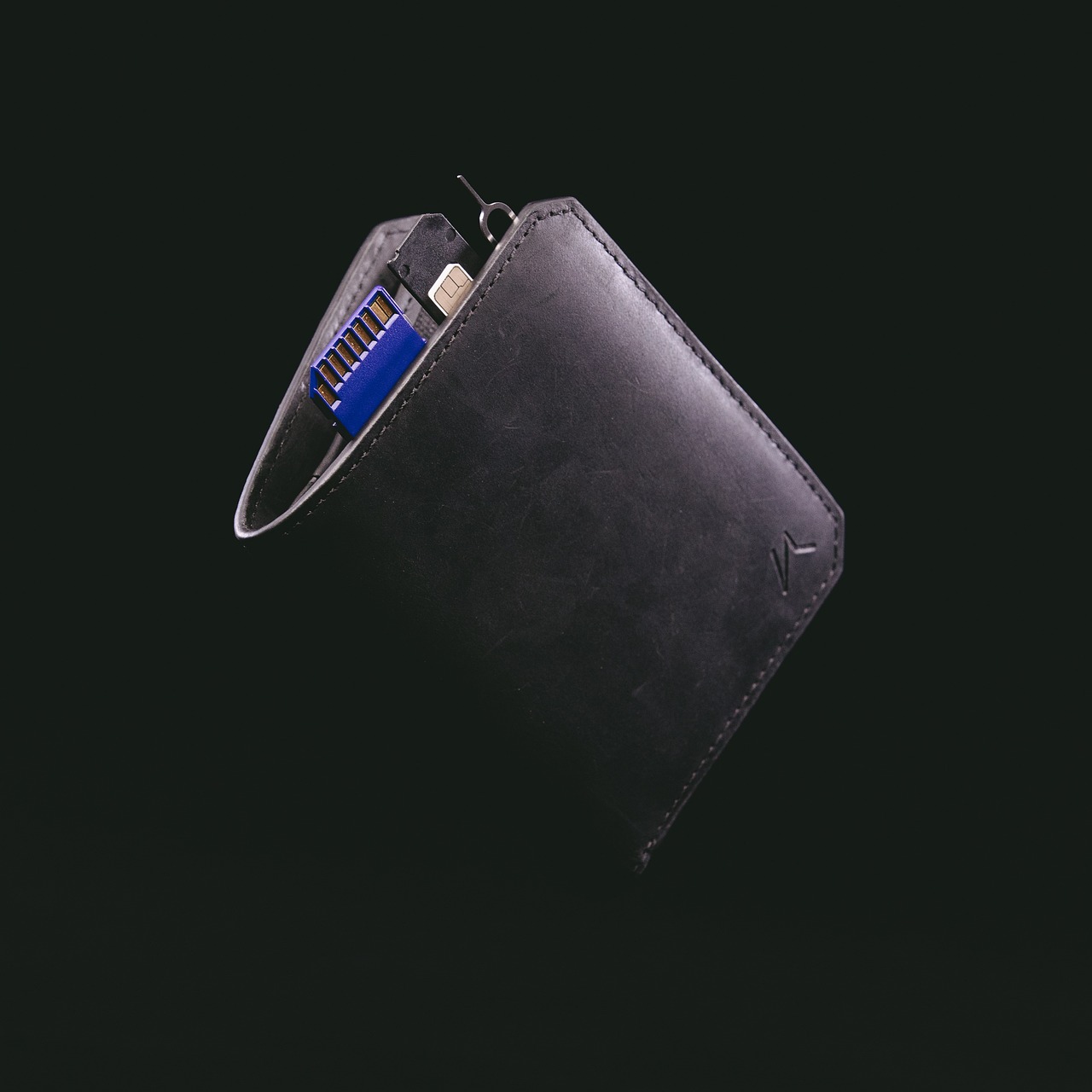
SMS vs. App-Based 2FA
When it comes to securing your digital wallet, two-factor authentication (2FA) is a must-have. But not all 2FA methods are created equal. The two primary options are SMS-based 2FA and app-based 2FA, and each has its own set of pros and cons. So, how do you decide which one is right for you? Let’s dive into the details!
First up, we have SMS-based 2FA. This method sends a text message containing a verification code to your mobile phone whenever you attempt to log into your wallet. It’s straightforward and easy to implement, making it a popular choice for many users. However, the convenience comes at a cost. SMS messages can be intercepted through various methods, such as SIM swapping or phone hacking. Imagine your phone number being hijacked, leaving your digital assets vulnerable to theft. It’s a scary thought, right?
On the other hand, app-based 2FA utilizes authentication apps like Google Authenticator or Authy to generate time-sensitive codes. These codes are generated offline, which means they’re not susceptible to interception like SMS codes. This added layer of security makes app-based 2FA a more robust choice for users who prioritize their financial safety. But, of course, it’s not without its challenges. If you lose your phone or the app, recovering access can be a bit of a hassle. So, it’s crucial to have backup options in place.
To help you visualize the differences between SMS and app-based 2FA, here’s a quick comparison table:
| Feature | SMS-Based 2FA | App-Based 2FA |
|---|---|---|
| Security Level | Moderate | High |
| Convenience | Very Convenient | More Steps Required |
| Vulnerability to Attacks | High (SIM Swapping, Interception) | Low (Offline Generation) |
| Backup Options | Limited | Multiple Backup Codes |
In conclusion, while SMS-based 2FA offers convenience, it’s essential to recognize its vulnerabilities. App-based 2FA, although slightly more complex, provides a significantly higher level of security. Ultimately, the choice comes down to your personal preference and how much you value the security of your digital assets. So, which method will you choose to protect your wallet?
- What is two-factor authentication?
Two-factor authentication (2FA) is a security process in which the user provides two different authentication factors to verify themselves. - Is app-based 2FA safer than SMS?
Yes, app-based 2FA is generally considered safer than SMS due to its offline generation of codes, making it less susceptible to interception. - What should I do if I lose my phone with my 2FA app?
Ensure you have backup codes saved in a secure location or use recovery options provided by the app to regain access.
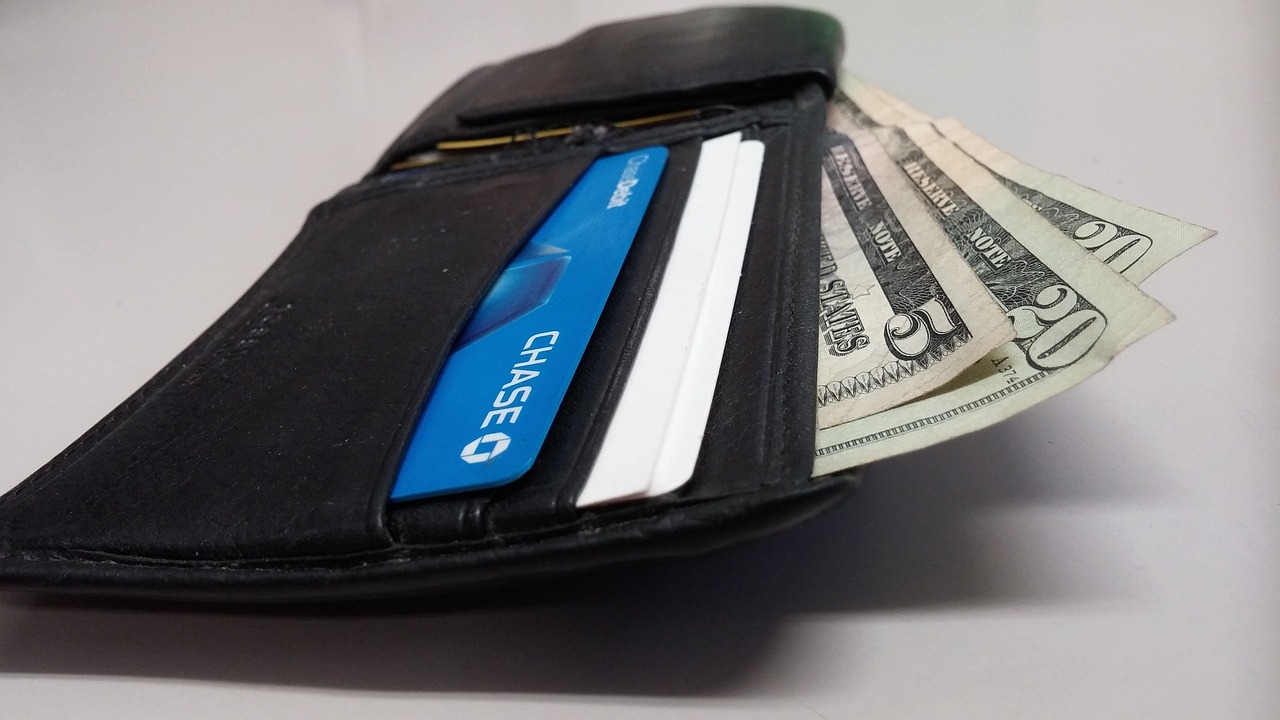
Advantages of App-Based 2FA
When it comes to enhancing the security of your digital assets, app-based two-factor authentication (2FA) stands out as a robust choice. Unlike traditional methods, such as SMS-based 2FA, app-based solutions offer a plethora of advantages that cater to the modern user’s need for both convenience and security. One of the primary benefits is offline access. With app-based 2FA, users can generate authentication codes even without an internet connection, ensuring that you can always access your wallet, regardless of your connectivity situation.
Moreover, app-based 2FA solutions, like Google Authenticator or Authy, are designed to be resistant to phishing attacks. Since the codes are generated within the app and not transmitted over potentially insecure channels, the risk of interception is significantly reduced. This is crucial in today’s digital landscape, where phishing attempts are rampant and can catch even the most cautious users off guard.
Another noteworthy advantage is the increased control users have over their authentication process. With app-based 2FA, you can easily disable or reset your authentication settings directly from the app, giving you peace of mind. Additionally, many of these apps come with features that allow you to back up your codes securely, ensuring that you won’t be locked out of your accounts if you lose your device.
Furthermore, app-based 2FA often supports multiple accounts and platforms, which means you can manage all your authentication needs from a single application. This not only simplifies the process but also enhances your overall security posture. You can think of it as having a digital vault that secures all your access points with just a tap of your finger.
In summary, the advantages of app-based 2FA are compelling. It offers offline access, increased resistance to phishing, better control over your authentication process, and the convenience of managing multiple accounts in one place. As we navigate the complexities of digital security, opting for app-based 2FA can be a game-changer in safeguarding your financial assets.

Limitations of SMS 2FA
While SMS two-factor authentication (2FA) is often touted as a convenient security measure, it comes with significant limitations that users should be aware of. One of the most pressing issues is its vulnerability to interception. Hackers can employ various tactics, such as SIM swapping, to gain access to a user's phone number. Once they have control over the phone number, they can easily receive the SMS codes intended for the user, thereby bypassing the security that 2FA was meant to provide.
Moreover, SMS 2FA relies heavily on the cellular network. If a user finds themselves in an area with poor reception or if their phone is lost or stolen, they may be unable to receive the verification codes at all. This can lead to frustrating situations where users are locked out of their accounts, unable to access their funds or sensitive information. In contrast, app-based 2FA solutions, such as Google Authenticator, do not depend on cellular networks and can generate codes even when the device is offline.
Another limitation is the potential for phishing attacks. Cybercriminals can create fake websites that mimic legitimate ones, tricking users into entering their credentials and the SMS code they just received. Once the attackers have both pieces of information, they can easily access the user's account. This highlights the importance of being cautious and vigilant when using SMS 2FA.
Finally, SMS 2FA can give users a false sense of security. Many people believe that having this additional layer of security is enough to protect their accounts, leading them to neglect other essential security practices. It's crucial for users to remember that while SMS 2FA is better than having no 2FA at all, it should not be the sole method of protecting sensitive information.
In summary, while SMS 2FA offers some level of security, its limitations make it less than ideal for protecting digital assets. Users are encouraged to consider more robust alternatives, such as app-based 2FA or biometric authentication, which provide enhanced security features and reduce the risk of unauthorized access.
- What is SMS 2FA? SMS two-factor authentication is a security process in which the user receives a text message with a verification code to confirm their identity.
- Why is SMS 2FA considered less secure? SMS 2FA is vulnerable to interception, SIM swapping, and phishing attacks, making it less secure compared to other methods.
- What are alternatives to SMS 2FA? Alternatives include app-based 2FA solutions like Google Authenticator, biometric authentication methods, and hardware tokens.
- How can I protect myself while using SMS 2FA? Always be cautious of phishing attempts, avoid sharing your phone number publicly, and consider using additional security measures.
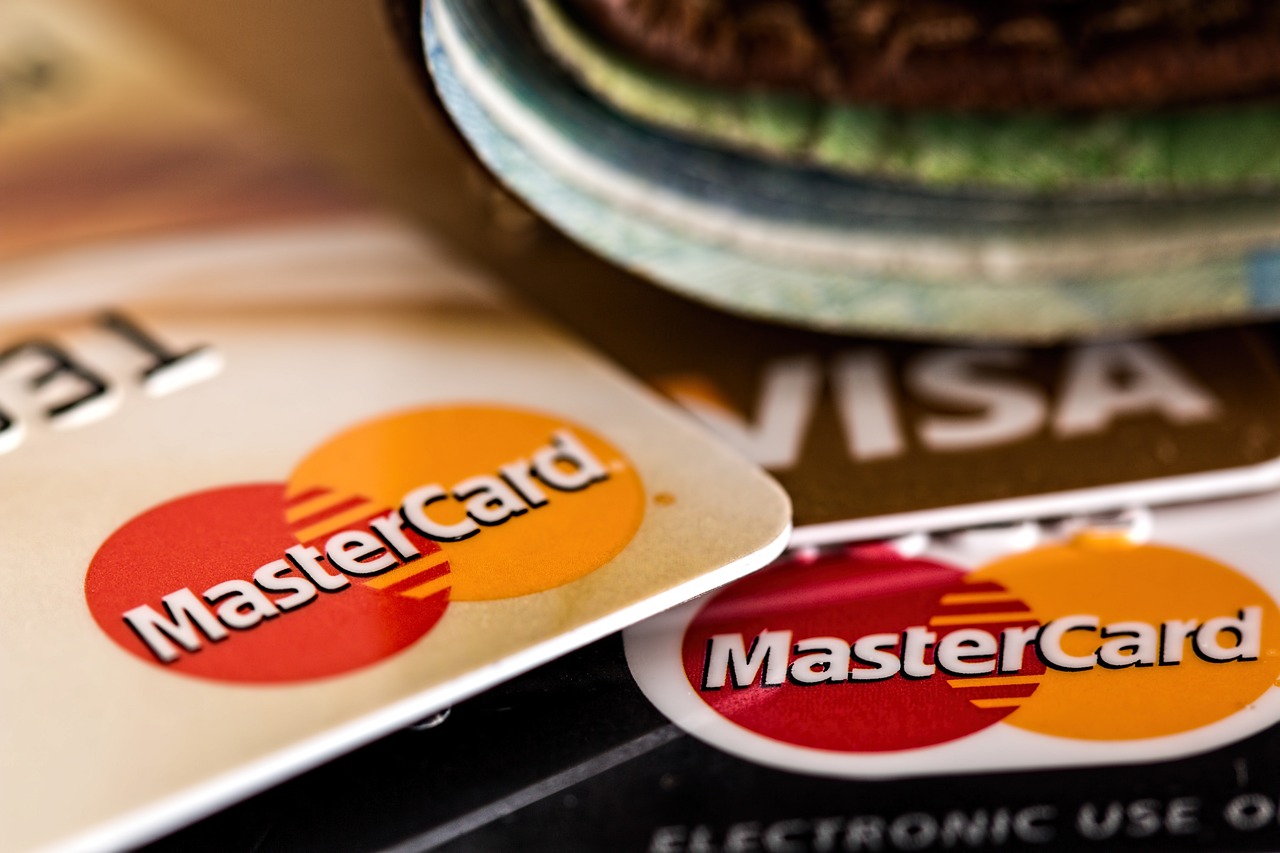
Biometric Authentication
In today's digital landscape, has emerged as a game-changer in the realm of security. Imagine being able to access your wallet with just a glance or a touch—this is the reality that biometric methods offer. By utilizing unique physical characteristics such as fingerprints, facial recognition, or even iris scans, biometric authentication provides a level of security that traditional passwords simply can't match. But is it all sunshine and rainbows? Let's dive deeper into the effectiveness and potential drawbacks of this innovative technology.
One of the most significant advantages of biometric authentication is its convenience. Users no longer have to remember complex passwords or worry about forgetting them. Instead, they can simply use their fingerprint or face to unlock their wallets. This ease of use not only enhances the user experience but also encourages more people to adopt secure practices. However, while the convenience factor is appealing, it’s crucial to understand that biometric data is not infallible. For instance, facial recognition can sometimes be fooled by photographs or masks, and fingerprint scanners can be bypassed under certain conditions.
Moreover, the storage and processing of biometric data raise privacy concerns. Unlike passwords, which can be changed if compromised, biometric traits are permanent. If a hacker gains access to your biometric data, there’s no way to reset it. This makes the security of biometric systems paramount. Companies must ensure that they are using robust encryption and secure storage methods to protect this sensitive information. It’s a delicate balance between convenience and security that users must navigate.
Another critical aspect to consider is the reliability of biometric systems. Factors such as lighting conditions, the cleanliness of the scanning device, and even the user’s physical state can impact the effectiveness of biometric authentication. For example, if your fingers are wet or dirty, a fingerprint scanner may fail to recognize you. Similarly, changes in your appearance, like growing a beard or wearing glasses, can affect facial recognition systems. Therefore, while biometric authentication is a step forward, it’s important to have backup methods in place, such as two-factor authentication, to ensure continued access to your wallet.
In summary, biometric authentication offers a blend of security and convenience that is hard to ignore. As technology evolves, we can expect these systems to become even more sophisticated, reducing the risks associated with their current limitations. However, users must remain vigilant and informed about the potential pitfalls of relying solely on biometric methods. A multi-layered approach to security—combining biometrics with other authentication methods—will provide the best protection for your digital assets.
- What is biometric authentication? Biometric authentication is a security process that relies on unique physical characteristics, such as fingerprints or facial recognition, to verify a user's identity.
- Is biometric authentication safe? While biometric authentication offers enhanced security compared to traditional passwords, it is not foolproof and can be vulnerable to certain attacks.
- Can I change my biometric data if it is compromised? Unlike passwords, biometric traits cannot be changed. This makes it essential to use additional security measures alongside biometric authentication.
- What should I do if my biometric authentication fails? If biometric authentication fails, it’s advisable to have backup authentication methods in place, such as a password or two-factor authentication.
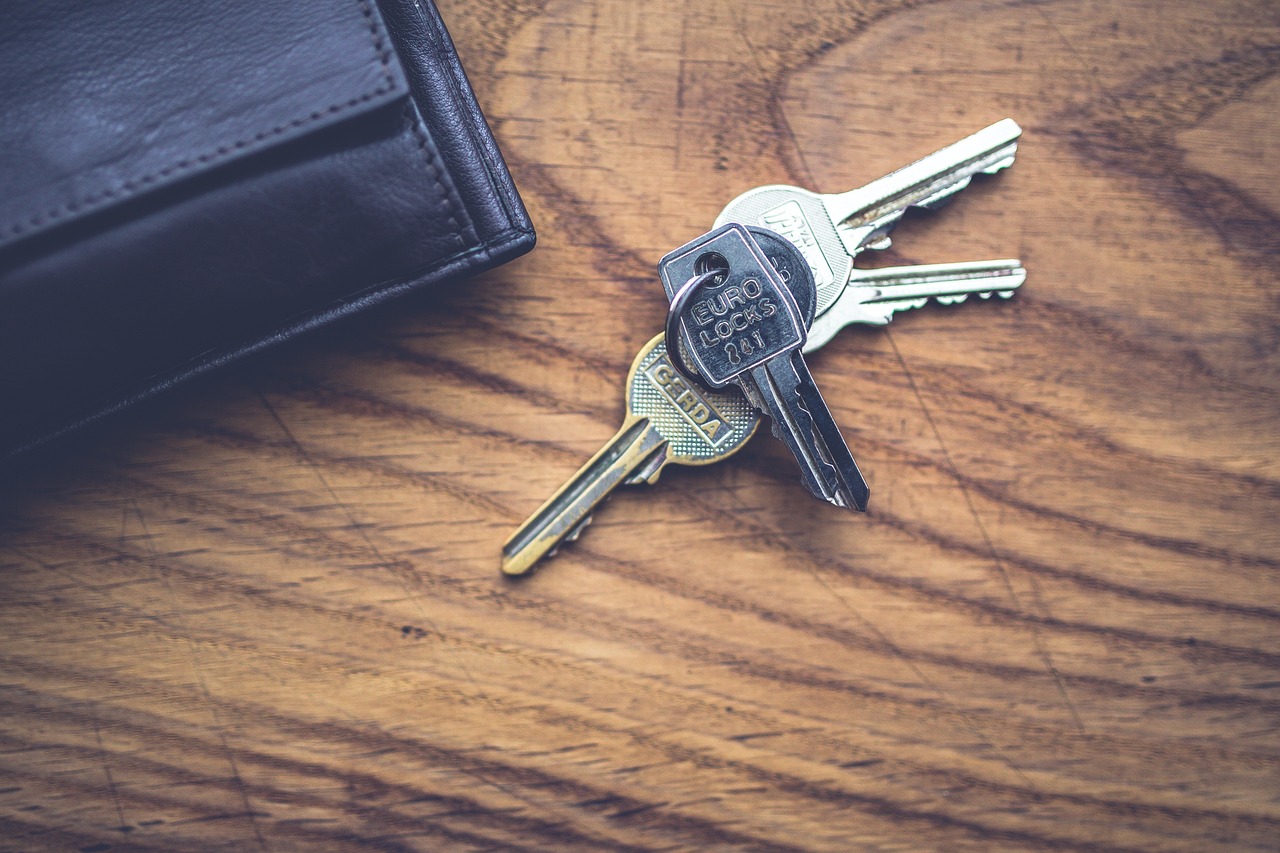
Private Key Management
When it comes to securing your digital assets, is paramount. Think of your private key as the front door to your digital wallet. If you lose it or let someone else in, everything you’ve worked hard for could be at risk. So, how do you ensure your private keys remain safe? It all boils down to understanding the best practices for storing and protecting these critical elements.
First off, it’s essential to recognize that there are various methods to manage your private keys, each with its own pros and cons. For instance, some users prefer the convenience of software wallets, while others opt for the enhanced security of hardware wallets. But regardless of the method you choose, the underlying principle remains the same: never share your private keys with anyone.
One effective way to manage your private keys is to utilize hardware wallets. These devices are designed specifically for storing private keys offline, significantly reducing the risk of online threats. Imagine a vault that’s not connected to the internet; that’s what a hardware wallet offers. They provide a secure environment that keeps your keys safe from hackers and malware. Not only do hardware wallets come with built-in security features, but they also allow you to manage your keys with ease.
On the other hand, software wallets, while more convenient for everyday transactions, come with their own set of vulnerabilities. They are typically connected to the internet, which makes them susceptible to hacking attempts. To mitigate these risks, it’s crucial to follow best practices such as:
- Regularly updating your wallet software to patch any security vulnerabilities.
- Using strong, unique passwords and enabling two-factor authentication.
- Backing up your wallet and private keys in a secure location.
Now, let’s dive deeper into the importance of backup strategies. Just like you wouldn’t put all your physical cash in one place, you shouldn’t rely on a single backup for your private keys. Consider having multiple copies stored securely in different locations. This way, if something goes wrong—like a fire or water damage—you won’t lose access to your funds. Think of it as having a safety net; it’s there to catch you when unexpected events occur.
Moreover, consider using encryption to protect your backups. By encrypting your private keys, you add an additional layer of security that can deter unauthorized access. Even if someone were to gain physical access to your backup, they wouldn’t be able to use it without the encryption key. This is akin to having a safe within a safe; it’s an extra hurdle that can thwart potential thieves.
Finally, educating yourself about the various threats and vulnerabilities in the digital landscape is crucial. The more you know, the better equipped you’ll be to protect your assets. Keep an eye on the latest security trends and always be on the lookout for new tools and methods that can enhance your wallet security.
Q: What is a private key?
A: A private key is a secret number that allows you to access your cryptocurrency. It’s essential to keep it private and secure.
Q: How can I securely store my private keys?
A: You can store your private keys on hardware wallets, encrypted USB drives, or even on paper in a secure location.
Q: What should I do if I lose my private key?
A: Unfortunately, losing your private key means losing access to your cryptocurrency. Always have a backup strategy in place.
Q: Are software wallets safe?
A: Software wallets are convenient but can be vulnerable to hacking. It’s important to follow best practices to enhance their security.
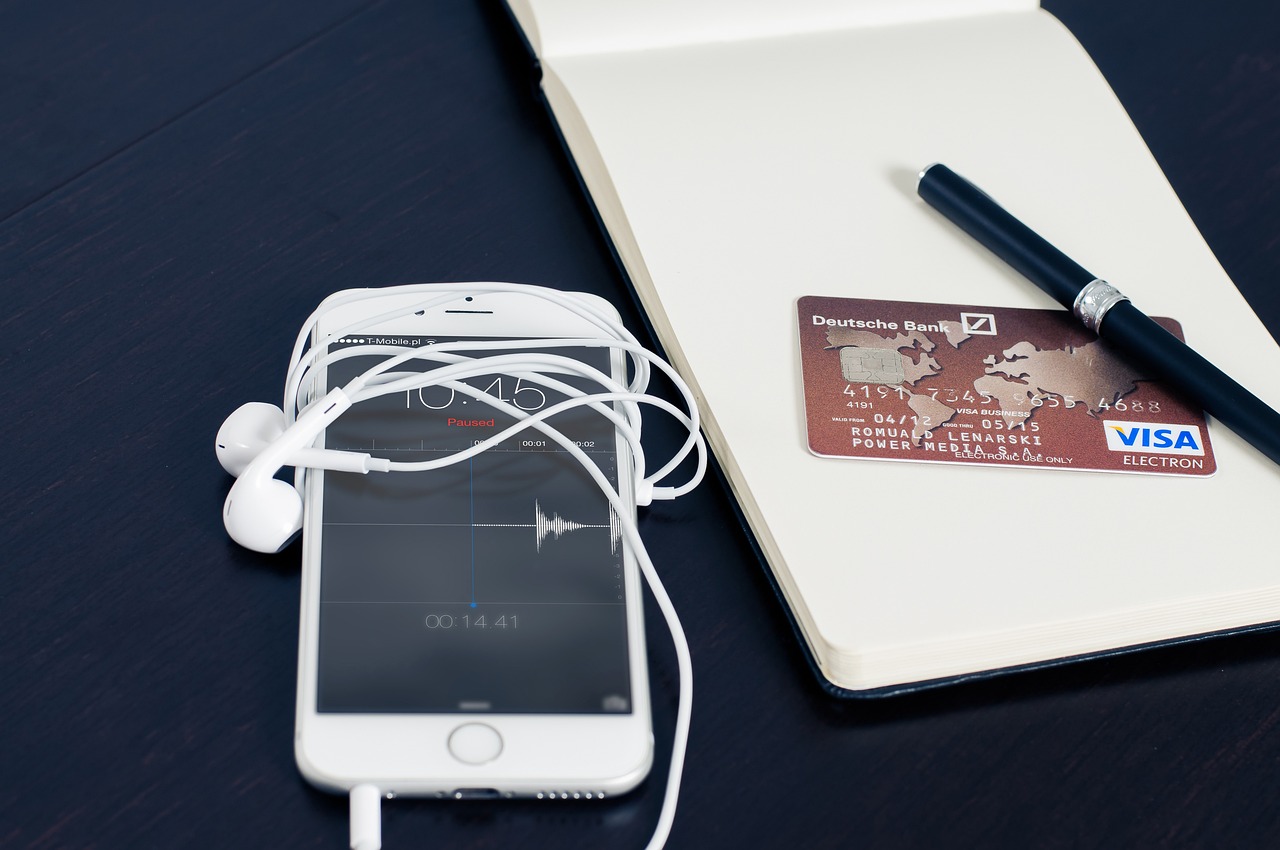
Hardware Wallets
When it comes to securing your digital assets, are often hailed as the gold standard. But what exactly are they, and why should you consider using one? Simply put, a hardware wallet is a physical device designed to store your cryptocurrencies offline, which significantly reduces the risk of hacking and theft. Imagine your digital currencies locked away in a safe, far removed from the prying eyes of the internet. This is essentially what a hardware wallet does!
One of the major advantages of hardware wallets is their ability to keep your private keys secure. Private keys are like the keys to your bank vault; if someone gets a hold of them, they can access all your funds. With hardware wallets, these keys never leave the device, making it nearly impossible for hackers to steal them remotely. For instance, when you want to make a transaction, the wallet will sign it internally without exposing your private key to the internet.
Additionally, hardware wallets are typically built with robust security features. Most devices come equipped with a PIN code or a password, and many even offer recovery seed phrases that allow you to restore your wallet if it’s lost or stolen. This layered approach means that even if someone physically steals your device, they would still need your PIN or password to access your funds.
However, while hardware wallets are incredibly secure, they are not without their drawbacks. For one, they can be a bit pricier compared to software wallets. The investment is worthwhile, but it’s essential to consider your budget. Additionally, if you lose your hardware wallet and do not have your recovery seed or PIN, you could lose access to your funds permanently. Therefore, it’s crucial to keep your recovery information safe and secure.
To give you a clearer picture, here’s a simple comparison of some popular hardware wallets:
| Wallet Name | Price | Supported Currencies | Security Features |
|---|---|---|---|
| Ledger Nano S | $59 | 1,500+ | PIN, Recovery Seed |
| Trezor Model One | $55 | 1,000+ | PIN, Recovery Seed |
| Ledger Nano X | $149 | 1,500+ | Bluetooth, PIN, Recovery Seed |
In summary, hardware wallets are a fantastic option for anyone serious about securing their digital assets. They provide a level of protection that software wallets simply cannot match. However, like any tool, they require responsible management and a bit of knowledge to use effectively. So, if you’re looking to enhance your wallet security, investing in a hardware wallet could be one of the best decisions you make!
1. Are hardware wallets completely safe?
While hardware wallets offer excellent security, they are not 100% foolproof. Always follow best practices, such as keeping your recovery seed secure and using strong PINs.
2. Can I use a hardware wallet with any cryptocurrency?
Not all hardware wallets support every cryptocurrency. Always check the supported currencies before purchasing a wallet.
3. What happens if I lose my hardware wallet?
If you lose your hardware wallet, you can recover your funds using the recovery seed phrase, provided you have kept it safe.
4. How do I choose the right hardware wallet for me?
Consider factors like your budget, the types of cryptocurrencies you hold, and the security features you need. Research and read reviews to make an informed choice.

Software Wallets
Software wallets are a popular choice for many cryptocurrency users due to their convenience and ease of access. These wallets are applications that can be installed on your computer or mobile device, allowing you to manage your digital assets with just a few taps or clicks. However, while they make it easy to send and receive cryptocurrencies, it's crucial to understand the security risks associated with using software wallets.
One of the main advantages of software wallets is their user-friendly interface. They often come with features that simplify the process of buying, selling, and trading cryptocurrencies. For instance, many software wallets offer built-in exchanges that allow you to swap one cryptocurrency for another without needing to go through an external exchange. This can save you time and make transactions more efficient.
However, the convenience of software wallets also comes with vulnerabilities. Since these wallets are connected to the internet, they are susceptible to various types of cyberattacks, such as malware, phishing, and hacking attempts. To illustrate this, consider the following table that highlights the pros and cons of using software wallets:
| Advantages | Disadvantages |
|---|---|
| User-friendly interface | Vulnerable to hacking |
| Convenient for transactions | Requires internet connection |
| Built-in exchange features | Risk of malware and phishing |
To mitigate these risks, users should adopt best practices when using software wallets. Here are some essential tips:
- Keep your software updated: Regular updates often contain security patches that protect against the latest threats.
- Use strong passwords: A complex password that includes a mix of letters, numbers, and symbols can significantly enhance your wallet's security.
- Enable two-factor authentication: This adds an extra layer of security, making it harder for unauthorized users to access your wallet.
In conclusion, while software wallets offer a convenient way to manage your cryptocurrencies, it's essential to be aware of the potential risks involved. By implementing robust security measures, you can enjoy the benefits of software wallets while minimizing the chances of falling victim to cyber threats. Always remember, in the world of digital assets, being proactive about security is the best defense.
- What is a software wallet? A software wallet is a digital application that allows users to store and manage cryptocurrencies on their devices.
- Are software wallets safe? While they offer convenience, software wallets are vulnerable to online threats. It's essential to use security best practices to protect your assets.
- Can I recover my funds if my software wallet is hacked? Recovery options depend on the wallet provider and the security measures you have in place. Always back up your wallet and keep recovery phrases secure.
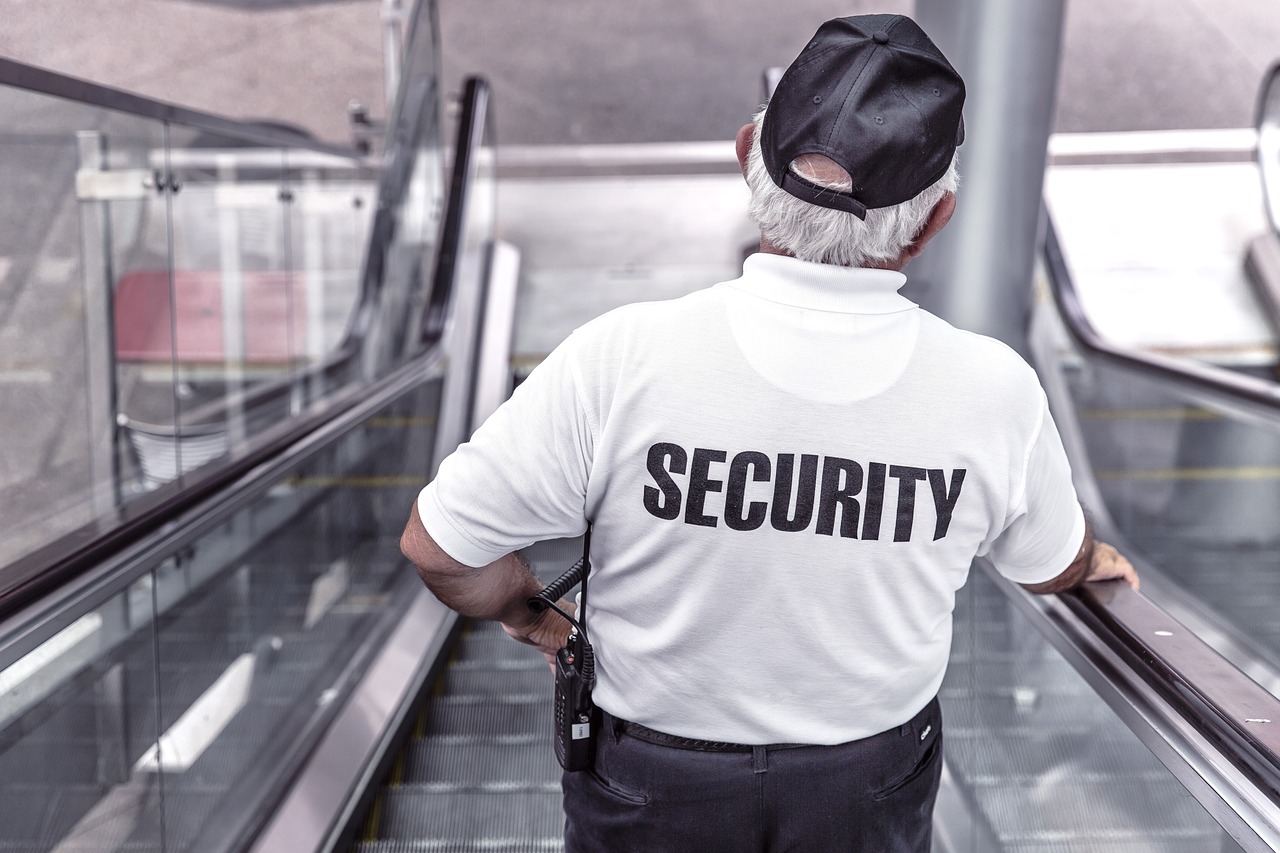
Best Practices for Wallet Security
When it comes to securing your digital assets, adopting is not just recommended; it's essential. In a world where cyber threats are becoming increasingly sophisticated, taking proactive measures can make all the difference between safeguarding your funds and suffering a devastating loss. So, what are the key strategies you can implement to protect your wallet? Let’s dive into some of the most effective practices that every user should consider.
First and foremost, strong passwords are your first line of defense. A weak password is akin to leaving your front door wide open. Ensure your password is a mix of uppercase letters, lowercase letters, numbers, and special characters. It should be at least 12 characters long. Using a password manager can help you generate and store complex passwords securely, eliminating the temptation to reuse passwords across multiple platforms.
Next, consider enabling Two-Factor Authentication (2FA) on your wallet. This additional layer of security requires not just your password but also a second form of verification, like a code sent to your phone or generated by an authentication app. While it may seem like an extra step, it’s an effective way to thwart unauthorized access. Remember, convenience should never come at the cost of security.
Another critical aspect is keeping your software up to date. Whether you are using a hardware wallet or a software wallet, updates often include security patches that protect against newly discovered vulnerabilities. Ignoring these updates is like ignoring a warning sign on a dangerous road. Make it a habit to check for updates regularly and install them promptly.
Moreover, be cautious about phishing attacks. Cybercriminals often use deceptive emails or websites that mimic legitimate services to steal your credentials. Always double-check the URLs of the sites you visit and never click on suspicious links. If you receive an email asking for your wallet information, it’s best to verify its authenticity through official channels before taking any action.
When it comes to managing your private keys, never share them with anyone. Your private key is essentially the key to your digital vault. Treat it with the same level of confidentiality as you would your bank account information. If you must store your private keys digitally, ensure they are encrypted and stored in a secure location.
For those serious about security, using a hardware wallet can be a game-changer. These devices store your private keys offline, making them less susceptible to online threats. While they may require an initial investment, the peace of mind they provide is invaluable. Always purchase hardware wallets from reputable vendors to avoid counterfeit products.
Lastly, consider backing up your wallet. Just like you would back up important documents, having a secure backup of your wallet can save you from potential disaster. Store backups in multiple locations, ensuring they are protected from unauthorized access. This way, even if your primary wallet is compromised, you still have access to your funds.
In summary, securing your digital wallet is a multifaceted approach that requires attention to detail and a proactive mindset. By implementing these best practices, you can significantly enhance your wallet's security and protect your hard-earned digital assets from potential threats.
Q: What is the most secure way to store my cryptocurrency?
A: The most secure way to store cryptocurrency is by using a hardware wallet, which keeps your private keys offline and away from potential online threats.
Q: How often should I change my wallet password?
A: It's advisable to change your wallet password regularly, especially if you suspect any security issues or if you've used the same password across multiple platforms.
Q: Can I recover my wallet if I lose access to it?
A: If you have backed up your wallet and stored your recovery phrase securely, you should be able to recover your wallet. Always ensure you have a backup before losing access.
Q: What should I do if I receive a suspicious email regarding my wallet?
A: Do not click on any links or provide any information. Verify the email's authenticity by contacting the wallet service directly through official channels.
Frequently Asked Questions
- What is wallet authentication?
Wallet authentication is a security measure designed to protect digital wallets from unauthorized access. It involves various methods, such as passwords, two-factor authentication (2FA), and biometric verification, to ensure that only the rightful owner can access their digital assets.
- Why is two-factor authentication important?
Two-factor authentication (2FA) adds an extra layer of security to your wallet by requiring a second form of verification, such as a text message or an authentication app. This makes it much harder for hackers to gain access, even if they have your password.
- What are the differences between SMS and app-based 2FA?
SMS-based 2FA sends a verification code to your phone via text, while app-based 2FA uses an application like Google Authenticator to generate codes. App-based 2FA is generally considered more secure because it is less susceptible to interception and SIM swapping attacks.
- How secure are biometric authentication methods?
Biometric authentication methods, such as fingerprint and facial recognition, provide a convenient and secure way to access your wallet. However, they are not foolproof; sophisticated techniques can sometimes bypass these systems. It's best to use them in conjunction with other security measures.
- What is the best way to manage private keys?
Proper management of private keys is essential for wallet security. Best practices include using hardware wallets for offline storage, regularly backing up your keys, and never sharing them with anyone. Always remember that if someone gains access to your private key, they can control your assets.
- Are hardware wallets safer than software wallets?
Yes, hardware wallets are generally considered safer than software wallets because they store your private keys offline, making them less vulnerable to online attacks. However, software wallets offer greater convenience for everyday transactions, so it's essential to choose one that fits your needs while understanding the risks.
- What are some best practices for wallet security?
To enhance wallet security, consider the following best practices: enable two-factor authentication, regularly update your software, use strong and unique passwords, and be cautious of phishing attempts. Additionally, always back up your wallet and private keys securely.



